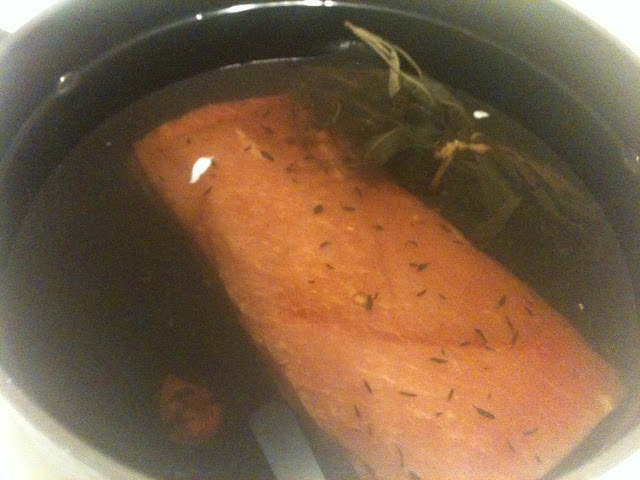 |
| This view shows the center of the loin, the cap off fat on top is beginning to dissipate, as well as the kernel. |
 |
| For the first step, turn the loin over with the Rib-eye section facing you. You can simply peel the cap and kernel away from the loin with your fingers. |
 |
| Any connective tissue is easily broken. |
 |
| Once you've peeled the majority of the cap off, you can roll the loin away from the cap. |
 |
| Once you've removed the cap, save it for later - You can make Salt Pork, or save for making Sausage. |
 |
| Now that the Loin is left fairly bare, the next step is going to be removing the heavy silver skin from the top of the Loin. |
 |
| In portions of an inch or so wide at a time, slip your knife in and push forward while tilting your knife slightly upwards. The idea here is to get all the silver off without cutting into the meat. |
 |
| Long knife strokes aren't the easiest but are absolutely worth practicing. |
 |
| Now we have an entirely lean Pork Loin. |
 |
| Submerge the loin completely, weigh down with a plate and refrigerate. I allowed the Loin to brine for a little less than 3 full days. |
 |
| Remove the loin from the brine and rinse off thoroughly and discard the brine. |
 |
| Once you've rinsed the Loin off, pat dry with paper towels and refrigerate uncovered for a day (or two). |




No comments:
Post a Comment